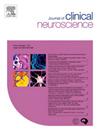Collateral gains from vascular microsurgical intervention on the V1 segment dolicoarteriopathy of the vertebral artery: alleviating restless leg syndrome and urgency urinary incontinence symptoms in refractory vertebrobasilar insufficiency cases
IF 1.8
4区 医学
Q3 CLINICAL NEUROLOGY
引用次数: 0
Abstract
Background
This study assesses the efficacy of vascular microneurosurgical interventions on the V1 segment dolicoarteriopathies (grade 2 and 3 kinks) of the vertebral artery (VA) in patients with refractory vertebrobasilar insufficiency (VBI), manifesting as secondary benefits for restless leg syndrome (RLS) and urgency urinary incontinence (UUI).
Methods
We retrospectively reviewed 78 patients for RLS and UUI symptoms who underwent vascular procedures primarily for refractory VBI due to V1 segment dolicoarteriopathy. Depending on the severity of arterial kinking, the surgical techniques varied from arteriolysis to perivascular sympathectomy and graft positioning. Patients underwent diagnostic evaluations, including brain magnetic resonance imaging (MRI), brain and cervical MRI angiography, and preoperative as well as postoperative (at 3-month follow-up) perfusion studies utilizing Computerized Tomography (CT) perfusion studies.
Results
Significant symptomatic improvement was noted post-surgery, with 85.7% of patients experiencing complete resolution of RLS and substantially reducing UUI symptoms. The microneurosurgical approach resulted in complete remission of VBI-related symptoms in 87.8% of patients, with the rest showing partial or marked improvement. Regarding cerebral perfusion, 17 out of 20 patients showed objective improvements in perfusion studies in paracentral lobule, which translates to an 85% enhancement rate. This significant increase in perfusion correlates with symptomatic relief.
Conclusion
Vascular interventions for V1 segment dolicoarteriopathy are associated with clinical improvements in RLS and UUI symptoms, in addition to refractory VBI symptoms. The correlation between improved perfusion metrics and symptom resolution suggests a vascular contribution to the pathophysiology, emphasizing vascular assessment in refractory VBI cases.
血管显微外科介入治疗椎动脉V1节段多动脉病的获益:缓解难治性椎基底动脉功能不全患者的不宁腿综合征和急迫性尿失禁症状
本研究评估了血管微神经外科干预对难治性椎基底动脉功能不全(VBI)患者椎动脉V1节多动脉病变(2级和3级结)的疗效,表现为不宁腿综合征(RLS)和急迫性尿失禁(UUI)的次要益处。方法回顾性分析78例RLS和UUI症状的患者,这些患者主要是因V1段动脉粥样硬化引起的难治性VBI而接受血管手术。根据动脉扭结的严重程度,手术技术从动脉溶解到血管周围交感神经切除术和移植物定位不等。患者接受诊断评估,包括脑磁共振成像(MRI)、脑和颈椎MRI血管造影,以及术前和术后(随访3个月)利用计算机断层扫描(CT)灌注研究进行灌注研究。结果术后症状明显改善,85.7%的患者RLS完全缓解,UUI症状明显减轻。微神经外科入路导致87.8%的vbi相关症状完全缓解,其余患者显示部分或显着改善。在脑灌注方面,20例患者中有17例在中央旁小叶灌注研究中表现出客观改善,增强率为85%。灌注显著增加与症状缓解相关。结论血管干预治疗V1段多动脉病与RLS和UUI症状的临床改善以及难治性VBI症状相关。灌注指标改善与症状缓解之间的相关性提示血管对病理生理的贡献,强调难治性VBI病例的血管评估。
本文章由计算机程序翻译,如有差异,请以英文原文为准。
求助全文
约1分钟内获得全文
求助全文
来源期刊

Journal of Clinical Neuroscience
医学-临床神经学
CiteScore
4.50
自引率
0.00%
发文量
402
审稿时长
40 days
期刊介绍:
This International journal, Journal of Clinical Neuroscience, publishes articles on clinical neurosurgery and neurology and the related neurosciences such as neuro-pathology, neuro-radiology, neuro-ophthalmology and neuro-physiology.
The journal has a broad International perspective, and emphasises the advances occurring in Asia, the Pacific Rim region, Europe and North America. The Journal acts as a focus for publication of major clinical and laboratory research, as well as publishing solicited manuscripts on specific subjects from experts, case reports and other information of interest to clinicians working in the clinical neurosciences.
 求助内容:
求助内容: 应助结果提醒方式:
应助结果提醒方式:


